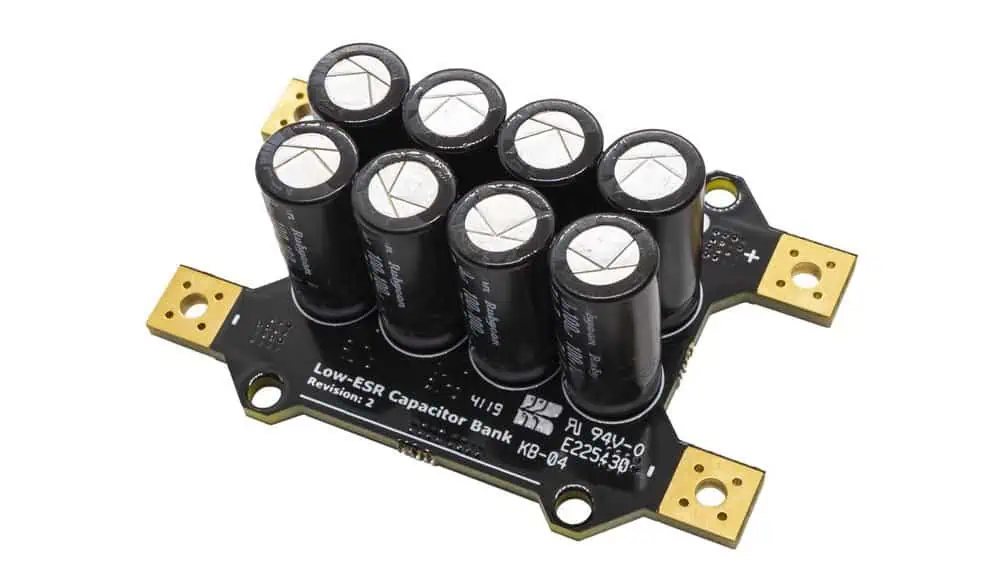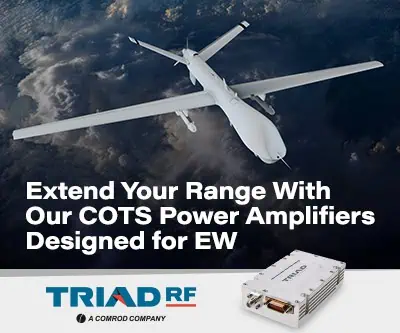In this article, Advanced Power Drives (APD) explains the importance of properly supplying your platform with the appropriate amount of input capacitance to ensure peak motor performance and stability.
For optimum operation, an Electronic Speed Controller (ESC) requires appropriate capacitance to maintain the reliability required for carrying out a successful mission, time and time again.
The Importance of Input Capacitance
The primary role of input capacitors in an ESC system is to smooth out voltage fluctuations from the battery. A steady voltage supply is required for the power train to function properly. Excess voltage ripple can cause the system to behave sub-optimally.
Important system factors include:
- Distance between capacitors and ESC
- Power lead length
- Voltage ripple of the power bus
- The temperature of the capacitors
Capacitor Location & Lead Length Considerations
There are three blocks to consider and the leads connecting them:
- Battery
- Input capacitors
- ESC
As the input lead length increases (battery to ESC), so does the impedance and voltage ripple that the ESC must handle. The same is true for highly inductive motors.
In order to mitigate these issues, the lead length requirements should be addressed, and input capacitance added. ESCs are designed to handle a finite input impedance, which is specified as the lead length in most datasheets. After a suitable lead length is decided, an appropriate amount of input capacitance must be added across the ESC power terminals.
Generally, ESCs perform better when located closer to the power source than the motor. However, there are tradeoffs to consider (EMI, etc). Additionally, in a regenerative ESC, the input lead length will also affect the voltage ripple during the regenerative braking process. APD ESCs have regenerative features enabled by default for improved system efficiency.
Capacitor Lifetimes
Electrolytic capacitors are typically utilized within input capacitor bank solutions for their capacitance density. The manufacturer determines a capacitor’s lifetime under typical loading conditions, usually in the thousands of hours range of constant operation. Both ripple voltage and temperature affect the lifetime of capacitors.
When ripple voltage exceeds the rated voltage of the electrolytic capacitor, it can cause increased stress on the capacitor’s dielectric material and lead to a shorter lifespan for the capacitor. Ripple voltage can also cause the electrolyte in the capacitor to break down more quickly. Temperature is another crucial factor that affects the lifetime of electrolytic capacitors. As the temperature increases, the electrolyte in the capacitor can start to break down more quickly.
Therefore, it is essential to consider both ripple and temperature when selecting electrolytic capacitors for an ESC system and de-rate appropriately. Ripple voltages and capacitor temperatures are simple to measure and important in propulsion characterization. Electrolytic capacitors are the primary wearing component of an ESC.
In summary, it’s important to consider all of the above when deciding on input capacitance. Proper input capacitance is critical for maintaining a reliable response from your craft. For the capacitor model and mounting recommendations, check the ESC documentation.



















